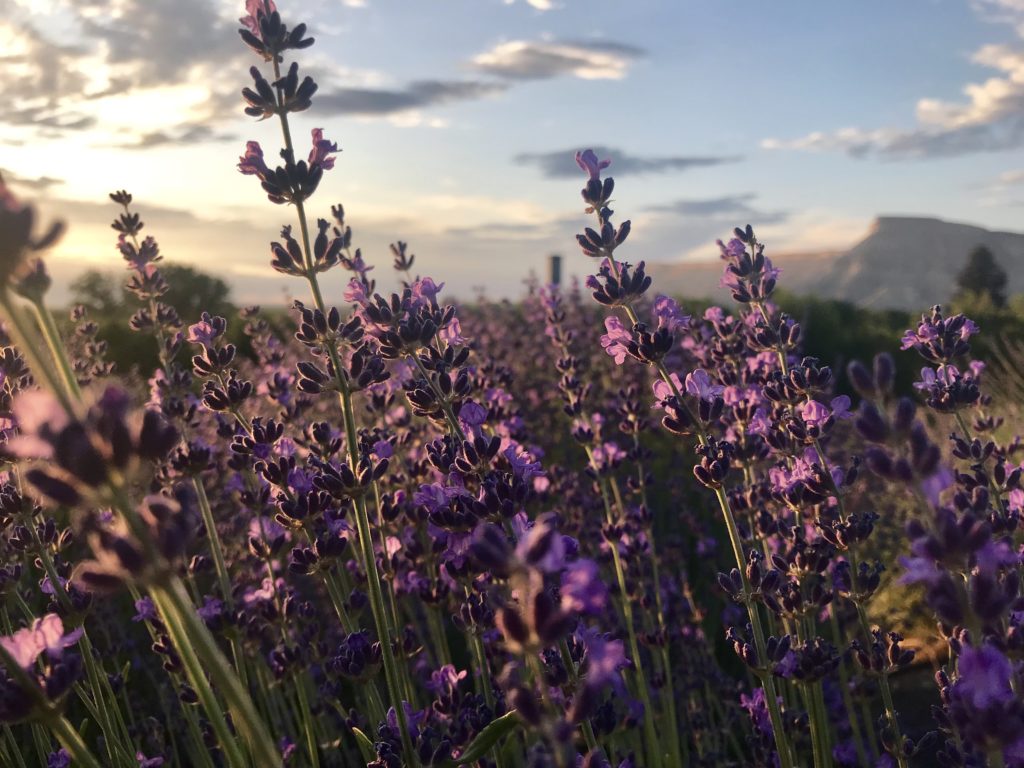 What are the roots of your company?
What are the roots of your company?
Wanting to get away from the Central Valley of California, we found that Palisade offered what we were looking for — cleaner air, more opportunities, an ag-oriented community, beautiful scenery, and a good place to raise our kids. In 2005, we moved here and bought a five-acre piece of land in the heart of orchards and vineyards. I wanted to pursue my passion and interest in growing herbs so I started out with a small trial of one species of lavender. By the third year my trials had expanded to 1,500 plants, which included three species and 15 cultivars. After a couple of years, I realized I wanted to propagate the lavender, so we built our first greenhouse in 2008. That same year, we started going to the local farmers markets where we began selling our lavender. It was a good testing ground for us, learning what our customers wanted. We continued on with processing the lavender into oils and steadily expanded our product line into bath/body and culinary products.
What markets do you focus on?
Our main market is on the wholesale side — focusing on minimally processed lavender products that are sold to processors who then turn our raw materials into literally hundreds of different lavender products and uses. While we continue to have a retail side of our business, the wholesale operation is where we’re experiencing the most growth. For example, we have recently started selling our lavender plug trays online and that’s doing quite well. Our internet presence is certainly helping us get discovered. In fact, during our summer lavender festival, we’ll see people from all over the country come here to learn about our operation and products.

Why have you elected to be organic?
We are a certified organic lavender grower and that designation has a couple of key benefits for us. First, the companies that buy from us often require organic components in their finished products to insure high quality and consumer acceptance. That’s a significant competitive advantage. Secondly, and probably even more importantly, being organic supports our goal to be sustainable in all that we do here. As a result, we grow strong and healthy plants and we’re very conscious of reducing our impact on the environment. More than just being organic, we strive to be as sustainable as possible, which ultimately is to everyone’s benefit.
Any trends that you’re seeing?
I feel that we’re seeing more young people seeking to learn about growing plants, gardening and pursuing the ‘do-it-yourself’ approach. For them, it’s more than just beautiful plants to accent a landscape or home interior, they are looking for plants that serve a purpose, whether that’s for cooking, teas or body products. They seem very eager to learn.
What do you value from being a CNGA member?
The best value for me is the education. CNGA also keeps me connected in ways that I can’t necessarily tap into here in my small community. The contacts and connections that I make are another very important benefit. It’s the people we meet through CNGA that help our business in so many ways — we’re very glad we joined!











